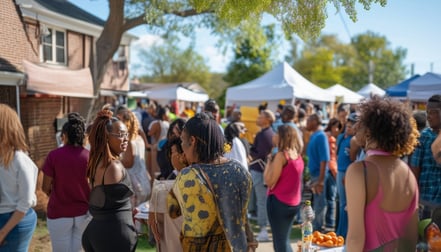
Fostering a sense of community in residential neighborhoods can significantly enhance the living experience and property value.
 The Importance of Community Engagement in Residential Areas
The Importance of Community Engagement in Residential Areas
Community engagement is crucial in residential neighborhoods as it fosters a sense of belonging and unity among residents. When people feel connected to their community, they are more likely to look out for one another, participate in local events, and contribute to the overall well-being of the area.
Engaged communities often experience higher property values and reduced crime rates. This is because residents who are actively involved in their neighborhoods are more vigilant and take pride in maintaining their surroundings. Additionally, strong community ties can lead to better communication and collaboration among neighbors, which can be beneficial in times of need or during community projects.
 Strategies to Foster Community Involvement
Strategies to Foster Community Involvement
One effective strategy to foster community involvement is to create opportunities for residents to interact and collaborate. This can be achieved through neighborhood meetings, volunteer groups, and collaborative projects such as community gardens or clean-up initiatives.
Another approach is to establish a community association or neighborhood committee that can organize events, address local issues, and serve as a liaison between residents and local authorities. Providing residents with a platform to voice their concerns and ideas can empower them to take an active role in their community.
 Utilizing Social Media and Technology
Utilizing Social Media and Technology
In today's digital age, social media and technology can be powerful tools for enhancing community engagement. Setting up a neighborhood social media group or online forum can facilitate communication and information sharing among residents. These platforms can be used to announce events, share local news, and discuss community issues.
Additionally, utilizing apps and websites designed for neighborhood engagement, such as FrontSteps, can streamline communication and make it easier for residents to stay connected. These tools can help organize events, send out alerts, and gather feedback from the community, making it more inclusive and responsive to residents' needs.
 Organizing Local Events and Activities
Organizing Local Events and Activities
Organizing local events and activities is a great way to bring residents together and strengthen community bonds. Events such as block parties, farmers' markets, and cultural festivals can provide opportunities for residents to socialize, celebrate, and learn about each other's backgrounds and interests.
Activities like fitness classes, book clubs, and hobby groups can also foster a sense of community by allowing residents to connect over shared interests. By offering a variety of events and activities, neighborhoods can cater to diverse interests and encourage more residents to participate.
 Measuring and Sustaining Community Engagement Efforts
Measuring and Sustaining Community Engagement Efforts
To ensure the success of community engagement efforts, it is important to measure their impact and sustain momentum over time. This can be done through regular surveys and feedback sessions to gauge residents' satisfaction and gather suggestions for improvement.
Maintaining open lines of communication and being responsive to residents' needs is key to sustaining engagement. Additionally, recognizing and celebrating community achievements can boost morale and encourage continued participation. By consistently evaluating and adapting engagement strategies, neighborhoods can create a thriving and connected community.

